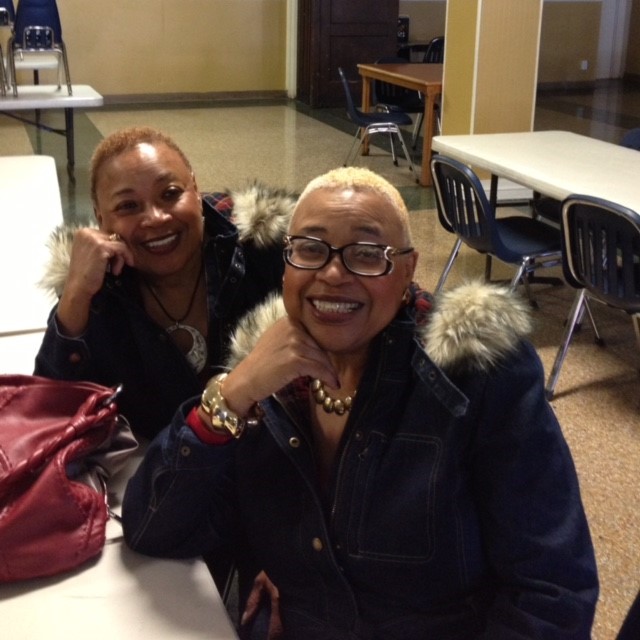“I’m Loyce ….I’m Joyce: No, I’m Joyce …That’s Loyce” “I’m Loyce ….I’m Joyce: No, I’m Joyce …That’s Loyce” was a constant refrain for us when our family moved from the segregated north end of the Kansas City to the center of the city in 1961, where we were the first generation, benefactors of the integration of Kansas City’s public schools.

For the first time, my identical sister and I attended a predominantly white school, Paseo High school. In 1954, our older siblings graduated from the only black high school in Kansas City, Lincoln High School. While white students had the option of attending seven high schools and three junior higher, black students attended either Lincoln High School or RT Coles Junior High.
I recall our walk to Paseo High School from our new home at 4109 Olive; we had on brown straight skirts and white blouses, no heels. Unaware that Black kids hardly ever used the front door of the school, we walked a half mile from our home to Paseo Boulevard and another half mile to 47th Paseo. The school was at the top of a long steep hill; and to reach the front entrance, we climbed over 50 steps in those brown straight skirts.
The large and imposing stone carved letters of “PASEO” were placed in the middle of the steps, built into the north and south sides of the hill. I remembered standing at the bottom of the hill and looking at this huge impressive structure and feeling a sense of doom and strangeness. We slowly climbed the steps, one by one, prolonging the inevitable contact with a dominant white culture.
The oak paneled walls and showcases of trophies represented a legacy that was foreign to me; and, for the first time in my life, I felt like a visitor in a foreign land. My segregated life was familiar and comfortable and here was a world where you could not expect to hear words of welcome and acceptance. I knew that my life would never be the same again.
We were eighth graders and our first year at Paseo meant that we would not be in the same classes. I was directed to my first classroom and the teacher motion to seat in a middle row toward the back of the classroom. I saw only white faces and missed the light-skinned black girl who was sitting in the middle of the front row. I sat next to a white boy, whom I later learned was Danny. He would occasionally smile at me, but I often turned my head — puzzled by his attempts to be my friend.
The light-skinned black girl blended in very well with the other students, but my carmel-colored skin did not provide such sanctuary. I felt my difference. She never smiled at me and when class was over she generally rushed from the classroom. I was so lonely and felt my “otherness” – a feeling that I can never overcome the meaning of skin color or my different speech pattern, so I grew silent. I never spoke. I constantly pulled tiny hairs from my arms. I would stare at the white follicles at the end of each tiny black hair. I was the black hair. I felt small and insignificant.
By the first semester of 10th grade, I was the tiny black hair on my arms —- I felt small and wrote small. I learned that “C” is for colored. All the black kids were aware of this phenomenon and we would smile and snigger from embarrassment. This was our way of coping with blatant racism. I never received feedback on my papers — at the top of most of my work was the red lettering of a “C”.
For 10th grade English, my teacher was a red haired white man. I didn’t know his real name — most of my teachers were “nameless” — except for Ms. Loveman, my 9th grade English teacher, who could ever forget her name. Was this her real name or did we give her that name? Most of the few black kids were in her class and Joyce was even in my class. Ms. Loveman felt she was helping us with our language and to get us to enunciate or as the black kids would say to talk white, she often told us to open our mouths and let the little man stand.
The red-haired white man, whom I later learned was Mr. Ray (pseudonym), assigned an essay for a project. I wrote in my usual small letters. I often wondered would anybody ever read my work; and, by then, my writing was unreadable to others, including me. As Mr. Ray handed me my paper, he said, “You can do better than this — redo this paper and write larger. I can’t read this.” I sat there in shock and disbelief — someone finally read my paper!
I started working for the red-haired teacher and then for myself. My grades changed from “C’s” to A’s and B’s. For a brief moment, I saw new possibilities for myself and “C” for colored took on a different meaning. It was much later in my career as an educator that I would learn of the power of high academic expectations. Just through his interactions, Mr. Ray helped me to engage academically; and by not accepting poor work from me, the “C’ for color became “C” for confidence in myself which transformed my educational experiences.
Years later, I was able to thank him when he contributed a half million dollars to the school of education. Did he remember this little black girl in his 10th grade English class from 1963? No, it was not important that Mr. Gersh, his real name, did not remember me. What was important was the encouragement and high academic expectations that he demonstrated in his teaching.
